Houston Rockets
An NBA Nightmare: The James Harden-Dwight Howard Pick-and-Roll
Carl Fudge of the Sloan Sports Analytics Conference takes a closer look at the effectiveness of both James Harden and Dwight Howard in the pick-and-roll and why that combo might become the NBA’s most lethal pairing.
Published
12 years agoon
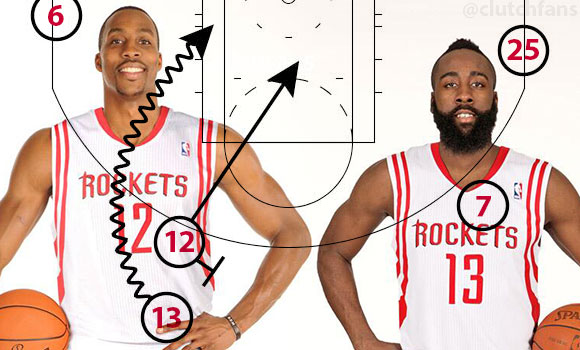
In 2012-2013, the Houston Rockets emerged as one of the best offensive teams in the NBA, utilizing an uptempo style and a steady diet of pick-and-rolls, isolations and three-pointers to fuel their rise to a #3 ranking in points per shot (bested only by Oklahoma City and Miami).
One of the biggest drivers of Houston’s success was the pick-and-roll. While the Rockets were quite good at it last year, they should be scary good at it next year with the insertion of a certain #12 into the lineup.
If basketball fans can recognize one offensive play, it’s the pick-and-roll – a two man play involving a ball handler and a screener setting a pick for that ball handler. Teams run this play with such frequency that the NBA is often referred to as a “pick-and-roll league” and the Rockets in particular have become known as one of the better teams at executing it.
Houston’s Pick-and-Roll
The Rockets went to the pick-and-roll nearly 1 out of every 4 times they were in a half court offense last season. Just how good was the Rockets’ pick-and-roll? The short answer is it was very good. In fact, the Rockets were the 3rd best team in the league, generating 0.92 points every time they ran it (only the Knicks and Heat were better).
The long answer requires thinking of the play in terms of two outcomes: the ball handler coming off the pick and taking the shot himself, or the ball handler passing to the rolling screener and letting him finish the play instead. If the ball handler took the shot, the Rockets were the best team in the NBA, but on the roll part of the play they ranked only 10th.
Harden’s Bread And Butter
By far the biggest driver of pick-and-roll success for the Rockets was star shooting guard James Harden. In fact, out of the 1,700 or so times the Rockets ran the play last year, Harden ended up deciding the outcome over 500 times. He averaged exactly one point per possession in these situations, the 5th best mark in the entire NBA, justifying his reputation as one of the very best pick-and-roll players in the league (even putting him above Chris Paul, who was #6).
As a true triple threat, Harden is an ideal pick-and-roll player and the coaching staff rightly trusts him to make a quality decision as to whether to shoot, pass or drive off the pick. Most often last year, Harden would look to score. He’s capable of sinking both the three-point and mid range jumper at a decent clip as well as using the screen to set up his Euro-steppy drives to the bucket that often result in a layup or free throws.
As noted in this informative analysis by Bballbreakdown, the outcome of Harden’s pick-and-rolls were most often dependent on where he was on the court; start on the left and he would like to drive all the way to the basket, start on the right wing and he would often step back into his three-point “J”, the spot where he was most comfortable and successful.
As good as it was, if there was one criticism of the Rockets’ offense last year it was that it lacked sophistication and became predictable. One memorable thread on Clutchfans even referred to it as a “gimmick offense” due to the reliance on cheap fast break points in addition to a limited offensive playbook.
I don’t totally agree with that characterization as I believe that the Rockets played to their strengths and ran the offense that gave them the best chance of winning given the talent on the roster. It is fair to say though that if the Rockets emerge as one of the better teams in the West, they will need to generate more variety out of their offense to stay competitive against highly motivated and prepared defenses.
Part of the reason for the Rockets’ predictability (and why they were only the 10th best team at scoring off the roll), was that as a roll man, Omer Asik was limited. While he could certainly set a mean screen, he was not as comfortable with the ball and ranked as only the 55th best pick-and-roll finisher, putting him among some of the worst front court starters in the NBA.
While Asik was not horrible and did get better over time – he still shot close to 60% – he lacks the footwork, hands and overall coordination to perform at an elite level in this part of the game. There is much to love about his skillset, but catching the ball on the run while avoiding the charge or travel and then finishing at the hoop is not a particular strength of his.
Enter Dwight Howard
With a unique combination of power, coordination and timing, Howard has consistently ranked among the best players in the league at finishing the pick-and-roll. In his “down year” last season, Howard was the 9th best roll man in the NBA, but in 2011-12 he was 2nd best and in 2010-11 he was #1. Last year Dwight averaged 1.29 points per pick-and-roll (30% better than Asik) on 79.6% FG%. To put this in perspective, this is significantly higher than the points per possession he scored on the post-ups he is said to favor (0.74) and even more points than he scored in transition (1.22).
Other than the rare occasions when Dwight got a wide open dunk, the pick-and-roll was his highest percentage scoring opportunity. If he doesn’t realize this now, I’m sure GM Daryl Morey and his team of number crunchers will have hammered it home soon.
Howard is so dangerous off the pick-and-roll because of his explosiveness and ability to score in so many different ways, as our highlight reel here shows:
Perhaps Howard’s favorite way to score is off the lob. As a 6’11” athlete with a 40” vertical jump, Dwight can go up two and a half feet above the rim to catch and dunk balls that few other players can even touch. While the Clippers have owned the term “Lob City” in recent seasons, there will be plenty of alley-oops in Clutch City too.
Dwight is also very skilled at catching the ball on the run, collecting the pocket pass and getting to the rim without traveling or charging – a skill that few big men can display as easily. Another pick-and-roll option he likes is to exploit the defensive misalignment and find deep position in the post, receiving the ball while sealing off his man and turning over one of his shoulders to put up the baby hook.
The other good news for Houston fans is that with Dwight as the screener, Harden should have even more space to operate, as opposing defenses focus on not giving up easy points to Howard. If opponents choose to double-team, there will be plenty of open three-point shots available on the perimeter for the likes of Jeremy Lin, Chandler Parsons, Francisco Garcia, Omri Casspi and Reggie Williams.
The early results are already good. Jeremy Lin spoke with Jason Friedman of Rockets.com about Howard after playing with him at an unofficial Rocket mini-camp in Los Angeles this week.
“He’s just an athletic freak,” said Lin. “Certain sets with him rolling down the paint toward the basket and using his athleticism, it’s going to be really good for us. I think we can be really creative with the ways that we use him. He’s just an animal when it comes to everything near the rim – he’s thrown down numerous alley-oops already from James. He forces defenders to take an extra step or two to make sure he doesn’t get the ball just because he’s so explosive and so strong, and that gives us so much room to work. He’s either getting a dunk or someone else is left wide-open.”
While this all sounds fantastic in theory, Dwight’s willingness to run the pick-and-roll was called into question last week by Steve Nash, who claimed in an ESPN radio interview that it “didn’t seem like (Dwight) really wanted to do a pick-and-roll offense” while with the Lakers. Fortunately, Dwight seemed to dispel that notion in his interview with Stephen A. Smith, commenting, “The way [James Harden] plays throughout that pick-and-roll – who’s going to stop that pick-and-roll?”
Good question, because while the Rockets were a dangerous pick-and-roll team with Harden and Asik, they could be downright lethal with Harden and Howard. With elite performers now on both sides of the play, I fully expect Houston to become the leading pick-and-roll team in the entire NBA next year.
Carl Fudge is a second year MBA at MIT Sloan where he is the content lead for the Sloan Sports Analytics Conference. He is a lifelong Rockets fan and has been posting on ClutchFans as GBRocket since 2003.
Carl Fudge is a former MIT Sloan Sports Analytics Conference organizer and long time Rockets fan.

You may like
-
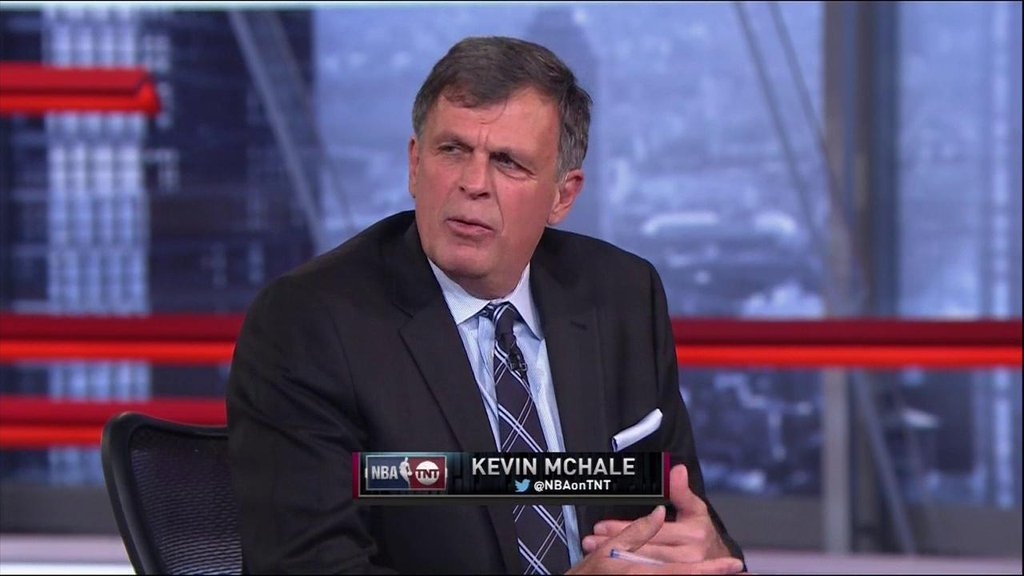

Former coach Kevin McHale discusses his firing from the Rockets
-
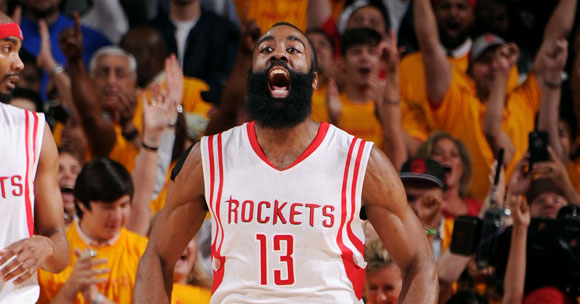

James Harden named MVP in Players’ Awards
-
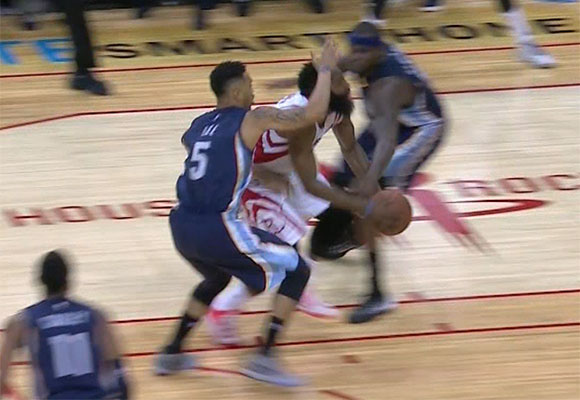

NBA admits they botched the no-call on James Harden’s late drive
-
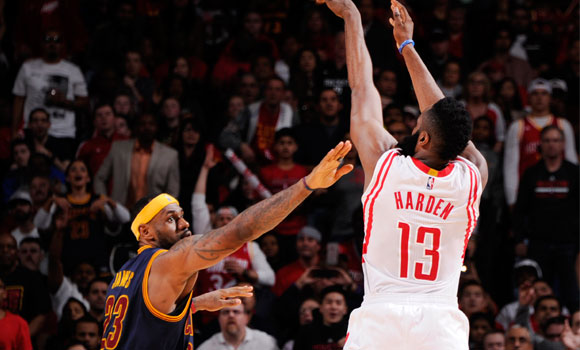

James Harden makes his play for the throne
-
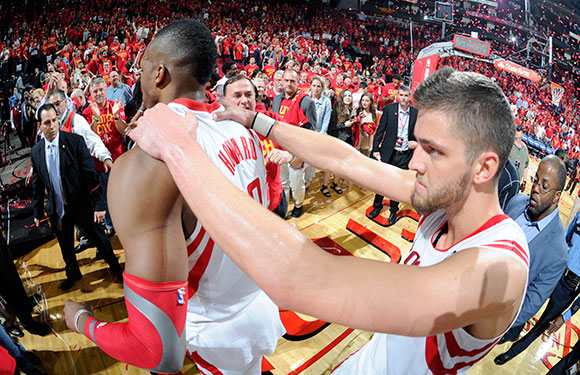

Rockets honored Dwight agreement with agent in letting Parsons out of his contract
-
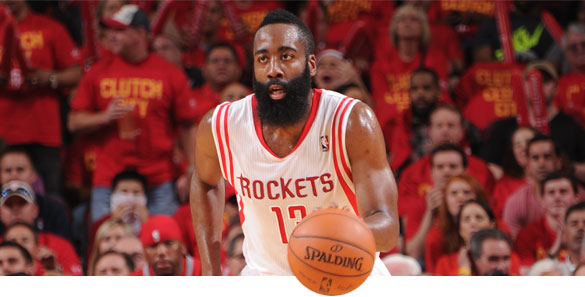

Podcast: Rockets take Game 5, but Harden still in a deep funk
Houston Rockets
Looking Back on the Trade for Phoenix’s Draft Picks
Are the Rockets set to cash in on Phoenix’s downfall or could a Suns retool murky the waters?
Published
1 month agoon
March 12, 2025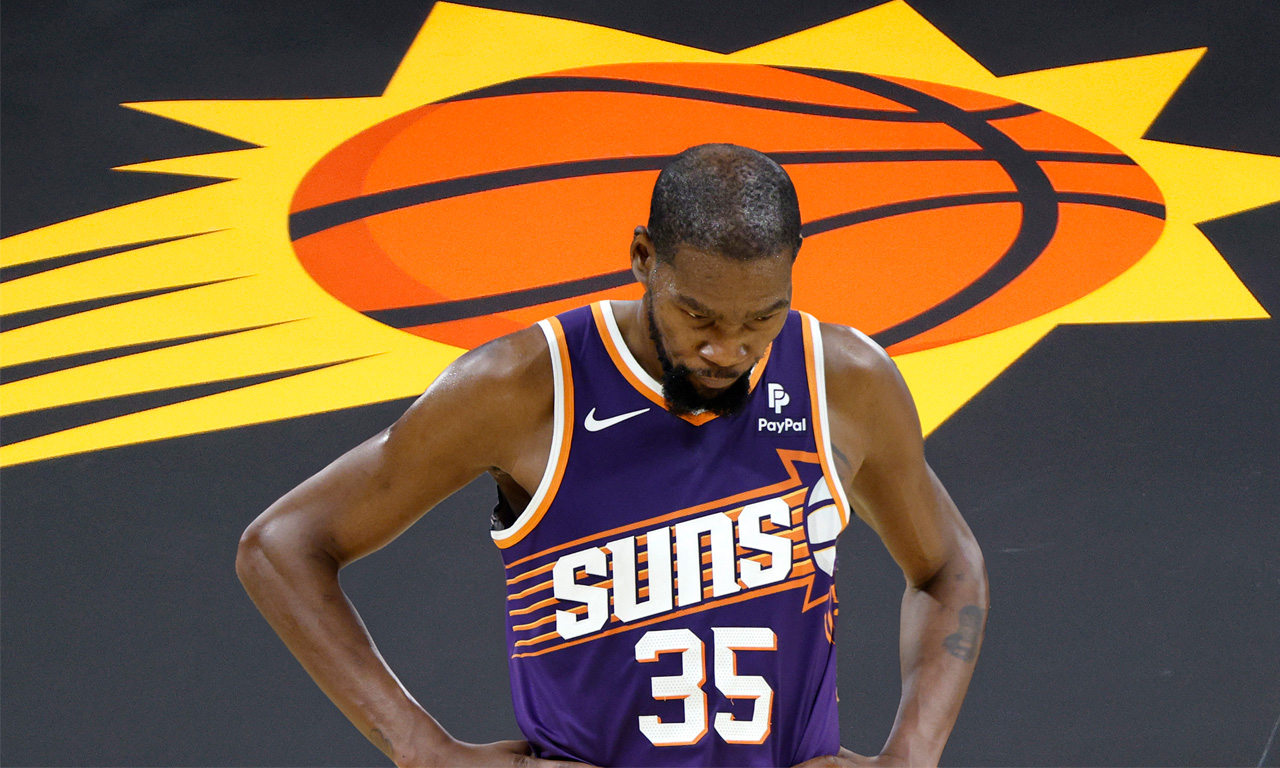
As the Houston Rockets set to host the Phoenix Suns tonight, it seems the right time to take a look back at the trade that linked these two franchises together for the foreseeable future.
This past June, the Rockets made a trade with Brooklyn that sent back to the Nets control of their 2025 and 2026 unprotected first-round picks. In exchange, the Rockets received a large chunk of Phoenix’s future (2025, 2027, 2029) and control of the Dallas Mavericks’ 2029 first.
In essence, the Rockets traded one pick and one swap for two picks and two swaps. All unprotected.
Thoughts At The Time of the Trade
If I’m going to discuss the current outlook of this trade, I have to be honest about how I saw it at the time of the move. While I didn’t hate this trade initially, I definitely didn’t love it either.
I liked that the Rockets increased their overall trade assets. I also liked that they extended the timeline to be able to make a bigger trade and I also appreciated that they kept control of the 2027 Brooklyn swap.
But I didn’t like that the Rockets gave up what seemed like the more established value (Brooklyn) for a more uncertain gamble (Phoenix). The Rockets did not control a “tanking runway” of picks to offer back to Phoenix — all of the picks Houston got in the deal were in staggered years (’25, ’27, ’29). I also felt Brooklyn, who badly needed to rebuild, got away with paying market value to get their picks back despite the fact that the Rockets invested years in watching those picks appreciate up to the point that they had the Nets completely over a barrel.
Net-net: I felt like more certainty was traded for less certainty and it was more of an equitable trade for both teams rather than Brooklyn paying dearly to get back the things only the Rockets could offer.
There were two ways I thought this trade could pay dividends: The Suns needed to flame out immediately, as in this season (unlikely), or the Rockets could trade all those pick assets as part of a deal for a real superstar in the next 12-18 months (more likely).
In a testament to how quickly change can occur in a very unpredictable NBA, four things have happened that have been positive indicators for the Rockets in making this move.
The Suns are fading
While Phoenix had major salary cap issues, dealing with the second apron, they didn’t appear to have problems on the court. They jumped out of the gate 8-1 and looked like a legitimate contender behind their star trio of scorers in Kevin Durant, Devin Booker and Bradley Beal.
Given Houston controlled Phoenix’s pick this year via a swap, it looked like the Rockets would come up empty-handed on the trade this season.
That changed quickly.
Injuries, serious depth concerns and a lack of a defensive identity has sent Phoenix spiraling. Booker’s availability has been inconsistent, forcing Durant to carry the load, while Beal has not quite fit in at all. Their financial limitations, thanks to owner Mat Ishbia’s all-in spending spree, have handcuffed their ability to improve the roster around the three stars.
The Suns are sitting 11th in the West, having gone 22-34 since that hot start, and are currently trying to catch a depleted Dallas squad to get back into the play-in picture.
As of right now, the Rockets project to end up with a lottery pick (albeit a late one) this season out of the trade.
Phoenix was caught shopping Durant
Because the Suns struggled so hard after the start, they tried to make a major move at the deadline but could not unload Beal, in large part due to his no-trade clause.
As a result, they may have made a misstep: They openly tried to trade Durant, which inevitably became public news.
Now? Durant will almost assuredly be traded this summer — likely to a destination that he handpicks. This means the Phoenix Suns will have to look at all possibilities for their future, including potentially having to give Rafael Stone and the Rockets front office a call.
But keep in mind, the Rockets can not offer Phoenix the ability to completely rebuild via the draft right now. Phoenix’s 2026 pick is controlled by Washington. They would have to get extremely creative to set that stage. A retool in Phoenix is much more likely.
Could Brooklyn have been better than expected?
This one is tougher to gauge.
The Brooklyn Nets are currently tied for fifth-worst team in the league, giving them strong lottery odds this summer. This was expected. After all, the Nets, even with a healthy Mikal Bridges and a full roster, were not a good team last season, closing the year 20-41 in the final three quarters of the season. The Rockets ended up with the #3 pick (Reed Sheppard) as a result of Brooklyn’s mediocrity.
However, if the Rockets had not placed that pick back in Brooklyn’s hands, would the Nets be better than this?
Brooklyn brought in a new coach in Jordi Fernandez that has had a positive impact. They have dumped off players, such as Dennis Schroeder and Dorian Finney-Smith, that impacted winning. The bar to make the play-in in the East (.415 winning percentage) is obscenely low, with Brooklyn being just five wins away from it at the moment.
And on top of that, Brooklyn did have lots of draft capital that they could have moved to try to win now.
It’s very tough to say as you don’t know if a team with Bridges still in Brooklyn might have actually been worse than this current squad, but you could make a case that the pick the Rockets would have ended up with from Brooklyn this season would be eerily similar to the one they will end up getting from Phoenix this year.
Again, this is a tough call.
Nico Harrison Hooked the Rockets Up
As part of the trade, the Rockets got control of the Dallas Mavericks’ 2029 first-round pick (unprotected, of course). While there’s really no way of knowing what a pick will be five years out, we did know that Luka Doncic would be just 29-30 years old that season and it was fairly etched in stone that he would be the core piece of a Dallas squad that season.
Enter chaos in Dallas.
Doncic was shipped out in the trade that shocked the world, which could have a major impact on the Rockets. Dallas’ current core of Kyrie Irving and Anthony Davis will be 37 and 36 years old that season, respectively.
On paper, the value of that pick shot up.
Final Summary
Right now, the outlook on these picks looks strong. One source stated off the record that they feel the 2029 Phoenix pick is the best pick asset out there that is owned by another team. The Rockets would be reluctant to add that one specifically into any trade unless it’s for a truly legitimate star.
But if there is any lesson that the NBA teaches us over and over again, it’s that it’s very hard to predict where a team will be a year from now, much less three years from now.
Can the Rockets pressure Phoenix and leverage the ownership they have of their draft capital to get what they really want (Booker) from them? Could a Suns retool around Booker and Beal, with the right pieces and assets acquired from a Durant trade, significantly change their on-court outlook and cap sheet — which in turn could damage the value of the picks Houston controls?
Bottom line is it has worked out well this season, and the future forecast at the moment is promising. The current value of those future picks appears strong. What will likely determine history’s final grade for this trade will be how it sets them up for the trade to come, and that’s where fans will be looking to Stone and the front office for action starting this summer.
Houston Rockets
Amen Thompson’s ankle injury will be re-evaluated in one week
“The things he does you can’t replicate,” says Rockets coach Ime Udoka
Published
2 months agoon
March 10, 2025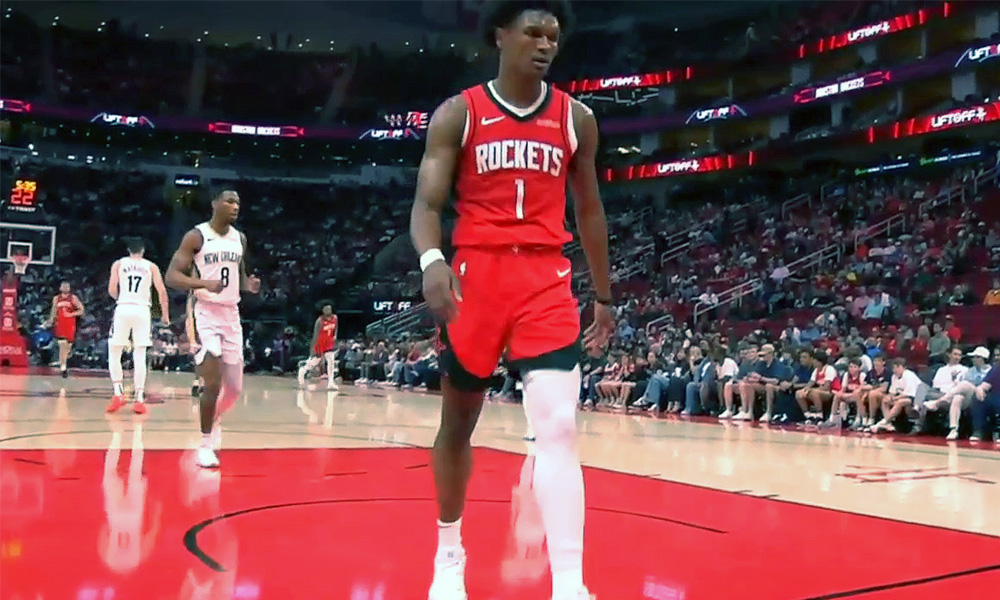
Rockets young star Amen Thompson will have his ankle injury re-evaluated in one week, according to Ime Udoka.
Thompson had an MRI on Sunday and the Rockets coach confirmed all imaging (X-ray, MRI) was negative.
“Just some swelling and pain, obviously,” said Udoka.
If you listen to Udoka, you can tell he knows how special Amen is to this team. He said the Rockets are missing a lot by not having him out there.
“Obviously, the things he does you can’t replicate,” said Udoka. “[Amen is] a guy that plays every position for us. When one goes down, he runs the point. If another is out, he runs the four.”
Amen is one of the best defensive players in the game, and as a one-on-one defender of guards/wings, he might already be the best in the league in just his second season. He’s holding his opponents to 40.5% shooting from the field, tops in the league.
“He’s a very unique defensive player,” said Udoka. “We got some guys that do some great things there, but I like to put him and Dillon on the best two usually, night to night. You got Tari and that’s a luxury as well, but the way he goes about it is different. His athleticism, size, speed, strength, shotblocking ability, steals… he’s all over the place.”
“Hard to replicate for sure.”
Amen injured his ankle late Saturday night in a blowout win against the Pelicans, but the unfortunate part was he probably should not have been on the floor in the first place.
The Rockets left Amen Thompson in the game in a blowout to get one more rebound for a triple-double and he just got injured. He's heading to the locker room with a limp. https://t.co/UBtrEpgWuU pic.twitter.com/D8GeKP8sQk
— ClutchFans (@clutchfans) March 9, 2025
The Rockets had built well over a 30-point lead by early fourth quarter. Jalen Green was able to rest the entire fourth. Alperen Sengun came out of the game with 7-8 minutes left while Dillon Brooks and Tari Eason came out with 6:00 left. But Thompson, who had posted an insane +39 on-off number, remained in the game because he was one rebound shy of a triple-double with 15 points, 11 assists and nine rebounds.
Udoka addressed that decision on Monday before the game against Orlando.
“What I typically don’t do is wholesale substitutions,” said Udoka of the decision to keep Amen in the game. “Albeit 30[-point lead] at six minutes [left] is different than losing to Minnesota, a 16-point lead with four minutes [left].”
“I’ve seen it go both ways in the past. You take out guys too early and have to bring starters back, and vice versa.”
Thompson has played in 60 games this season, five short of being eligible for postseason awards. He absolutely should be up for an All-Defensive nod this season so keep an eye on him getting back in time for that. He would need to return to action no later than April 4th for the game against the OKC Thunder in order to play enough games to be eligible.
Houston Rockets
How the Kyrie Irving Injury Impacts Rockets
Houston’s draft positioning and offseason plans could be impacted by Dallas
Published
2 months agoon
March 4, 2025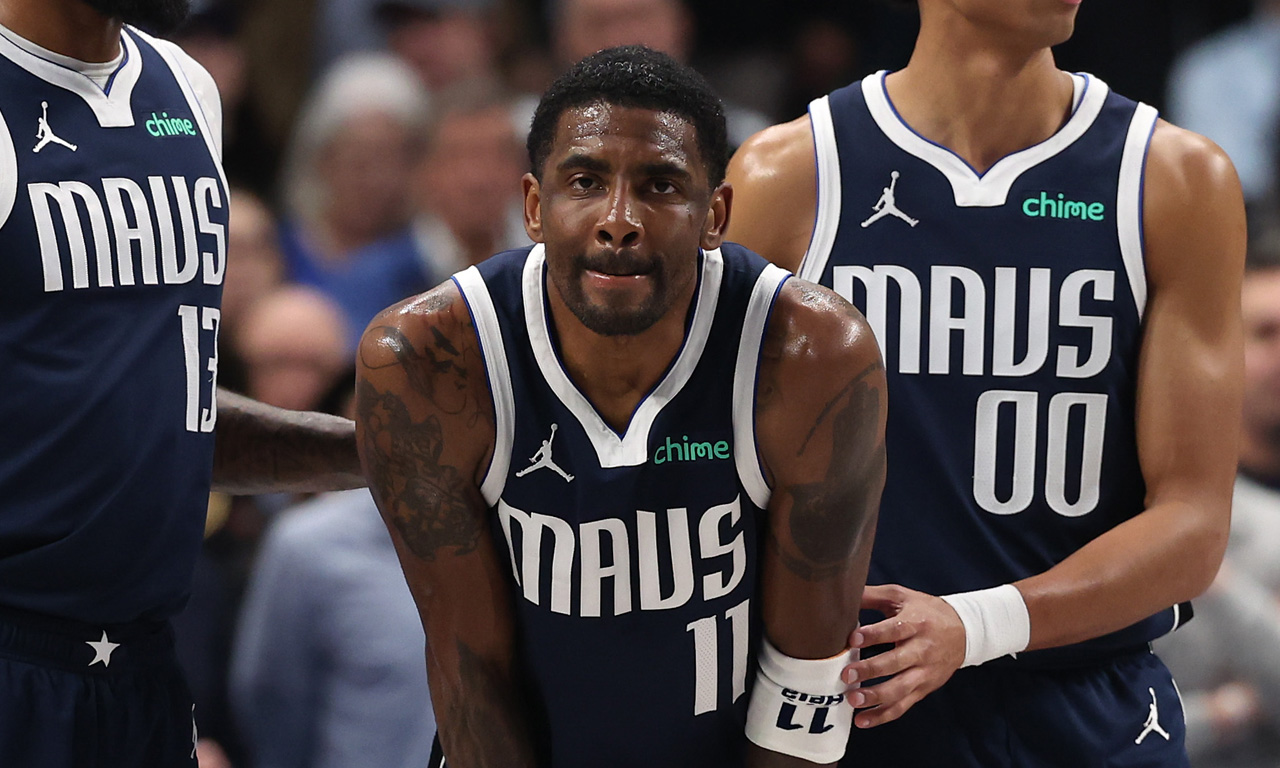
Dallas Mavericks guard Kyrie Irving was injured Monday night and the news dropped on Tuesday that the knee injury is serious — a torn ACL in his left knee that will end his season and a good portion of next season as well.
Brutal. I can’t think of an NBA team that imploded faster than the Dallas Mavericks.
You trade away a 25-year-old phenom who just hoisted you on his back en route to the NBA Finals a year ago. You cashed in that golden ticket to go all-in on a trio of aging stars in Kyrie, Anthony Davis, and Klay Thompson.
Bold strategy, Nico. Let’s see if it pays off.
(Narrator: It’s not paying off.)
The Mavericks had some interesting potential this year and maybe the next couple of years once everyone was healthy, but now? Their star guard is likely out until the calendar year 2026 and Klay and AD aren’t getting any younger nor more durable. The Mavericks may have actually swapped their future for a present that never arrives — and Dallas GM Nico Harrison has to be feeling overwhelming pressure right now.
So how does this impact the Rockets?
For starters, Houston has a game remaining on the schedule against Dallas on March 14th at Toyota Center — Davis may or may not be back for that game.
More importantly, Dallas is the 10th seed in the West at the moment, just 3.5 games ahead of the Phoenix Suns (11th seed). The Rockets control Phoenix’s first-round pick unprotected this season via a swap. We need as many West teams as possible ahead of Phoenix to keep them out of the play-in/playoffs and to push them as deep into the lotto as possible.
This complicates that. Phoenix’s remaining schedule is the toughest in the NBA by a good margin, with plenty of games left against the league’s best teams, so it still looks promising overall — but we’re talking about Kevin Durant, Devin Booker and Bradley Beal. They can still get hot at the right time while Dallas may struggle.
So keep a close eye on that. The good news is the Portland Trail Blazers are one of the hottest teams in the league and they are (shockingly) nipping at the Arizona squad’s heels.
Taking a look ahead to the offseason, the Kevin Durant Pursuit will be big.
This one is a little more complicated for Houston. The Rockets really want Devin Booker but, as of now, the Phoenix plan appears to be to trade KD this offseason and retool around Booker. The Rockets will have interest in Durant but they’re not going to sell the farm (prospects and all the picks) for a 37-year old like they would for Booker.
Three teams that I’ve heard a lot about from Rockets circles that will be in the mix are Houston, Minnesota and Dallas — Timberwolves and Mavericks have been considered the main competition. But, a lot of this will depend on Durant himself and where he wants to play at this stage of his career.
Keep in mind also, if the Suns are “retooling” around Booker and Beal (holding the no-trade clause), then they could be placing a higher priority on win-now players over the return of their own draft assets. The Rockets definitely have the best assets overall to offer up in any trade package between those three teams, but if Phoenix does prefer finding the right ready-to-win players around Booker/Beal, that gives Dallas and Minnesota a real chance.
This injury “may” take Dallas out of the equation, and they are/were definitely a contender for KD’s services given his past relationship with Kyrie and the way Dallas was positioned to win right now. Does KD at his age want to wait for Kyrie to be healthy?
And one last friendly reminder: The Rockets control that Dallas 2029 first (unprotected).
Houston Rockets
Rockets Sign David Roddy to Two-Way Contract
Former first-round pick has played with the Grizzlies, Suns and Hawks
Published
2 months agoon
March 3, 2025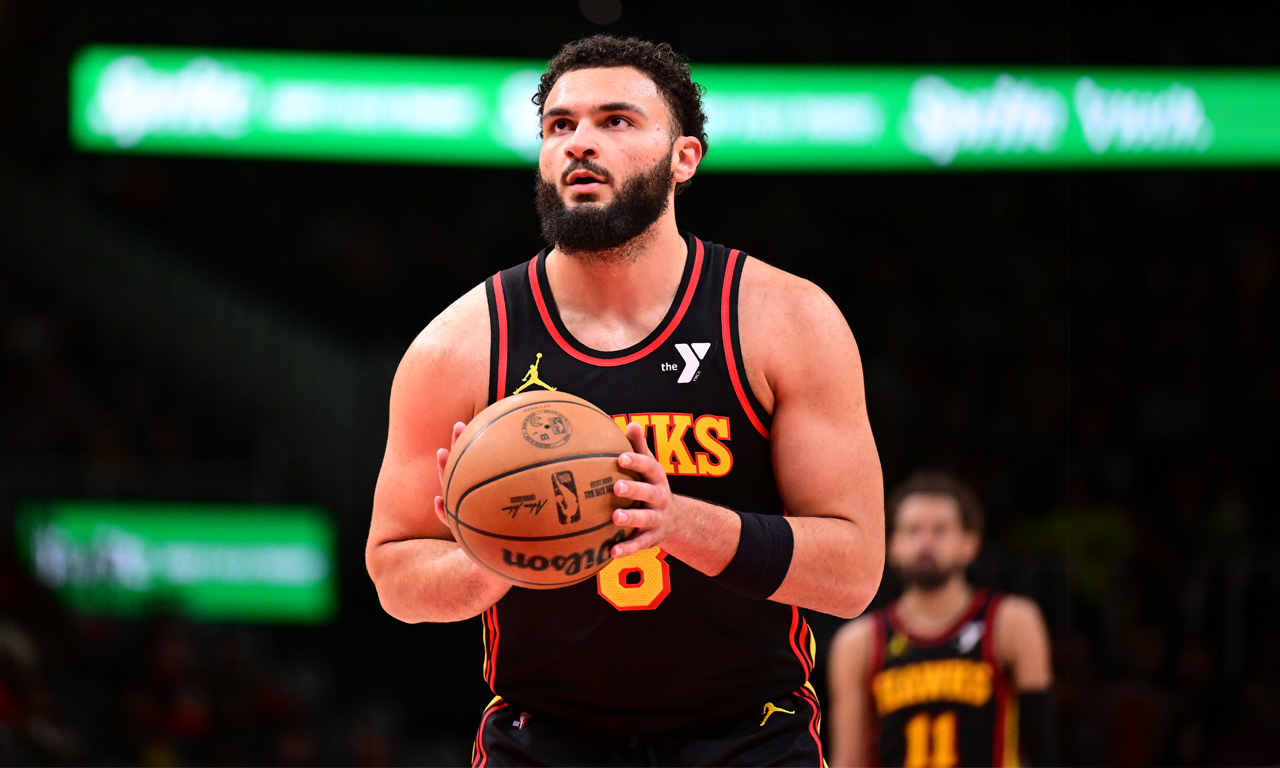
The Rockets made a move on Monday, signing former first-round pick David Roddy to a two-way contract.
The two-way spot opened up after the front office signed Jeenathan Williams to a standard four-year, $8.2 million contract (with friendly team options all along the way).
Roddy is 6-foot-5 and 250+ pounds but sports a 6-foot-11 wingspan. He was taken with the 23rd pick in the first round of the 2022 NBA Draft — six selections after the Rockets drafted Tari Eason. A standout in college, Roddy averaged 19.2 points, 7.5 rebounds, 2.9 assists, 1.2 steals, and 1.1 blocks per game during his junior season at Colorado State.
Roddy, who turns 24 later this month, is a physical player who can play multiple positions. He’s a solid rebounder for his size/position. He has played in 165 games over three seasons with the Grizzlies, Suns, Hawks and most recently Sixers, averaging 6.2 points and 2.9 rebounds per game.
The guard/forward has not shown efficient shooting, however — he’s a career 30.5% three-point shooter and just 68.4% from the line. His defense is better inside than out.
Ultimately, it will be those two things — three-point shooting and defense — that will determine his chances of carving out a consistent role in the league.
All in all, it’s a low-risk signing and the Rockets get a look at a prospect that fits their age timeline.
Houston Rockets
Houston a potential landing spot for Ben Simmons post-buyout?
Published
3 months agoon
February 6, 2025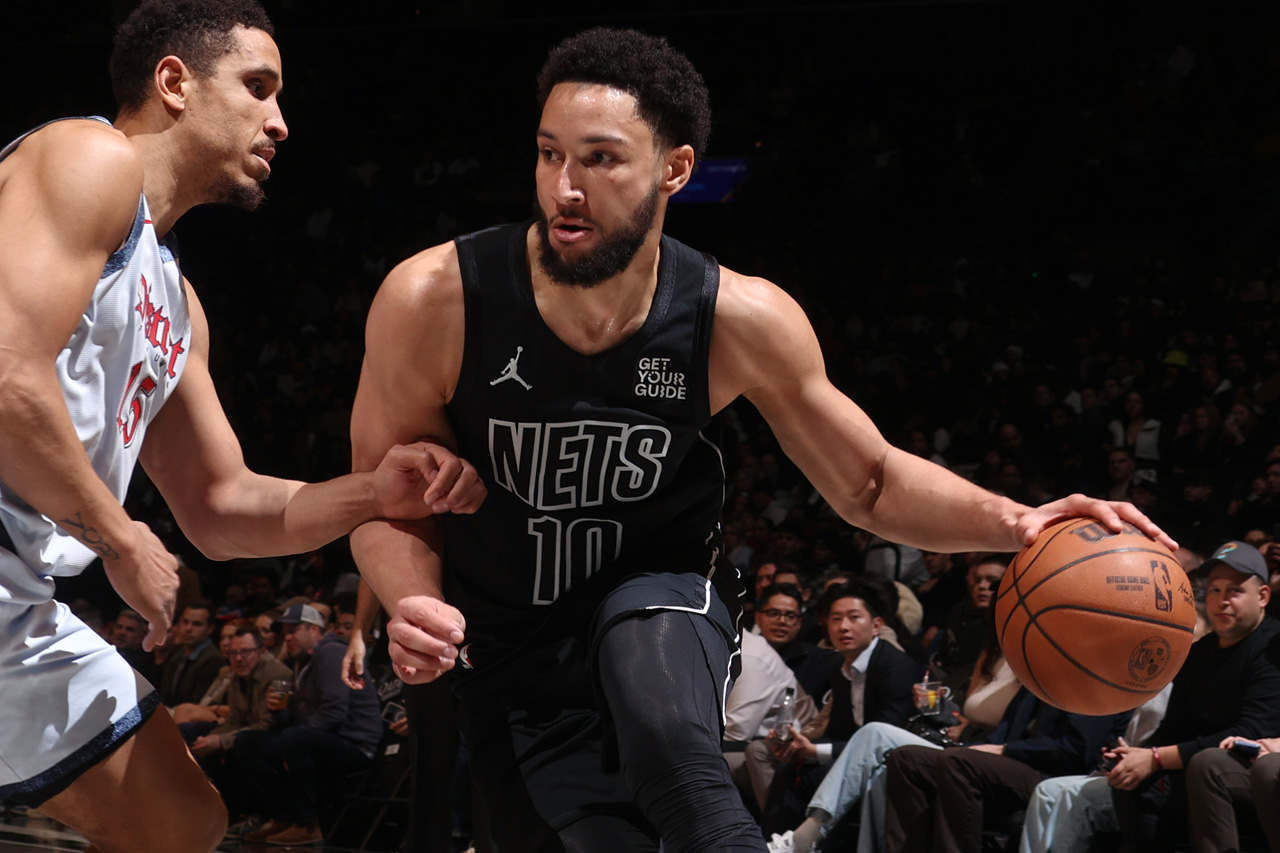
ESPN NBA analyst Brian Windhorst said on Thursday’s NBA Trade Deadline show that Brooklyn Nets forward Ben Simmons is working on a buyout and the Houston Rockets is a potential landing spot for him.
“Cleveland and Houston are two situations for Ben Simmons,” said Windhorst.
Brian Windhorst says the Cavaliers and Rockets are buyout locations for Ben Simmons.
Thoughts? pic.twitter.com/7ly4mvmxr5
— ClutchFans (@clutchfans) February 6, 2025
Advertisement
Rockets coach Ime Udoka was an assistant coach in Philadelphia in 2019-20 when Simmons was with the Sixers, before injuries took a significant toll. In fact, Udoka, when speaking about Amen Thompson earlier this season, brought up some comparisons to Simmons.
“The skill set is there, and it’s something that’s unique with his speed, athleticism, size, passing ability, and all those things,” said Udoka of Thompson. “I coached somebody, Ben Simmons, who had similar traits… as far as size and ability to push the pace, and find guys and finish. There are some similarities there.”
Both Thompson and Simmons are known for their elite athleticism, defensive versatility, and ability to create opportunities in transition.
However, can Simmons help the Rockets today? That’s the tough question.
Simmons has played in 33 games this season, averaging 6.2 points, 6.9 assists, 5.2 rebounds, 0.8 steals and 0.5 blocks in 25 minutes a night. He does not shoot threes (like, at all) — he has only attempted two threes in the past three seasons combined.
Ideally, he does not play in front of your young forwards of Amen, Tari Eason and Jabari Smith Jr. and on that basis alone, I think I would pass. But, Ime loves defensive dogs and he could use some extra ballhandling on the roster. You can see that there’s little in the way of offensive organization when Fred VanVleet is out.
There would be a comical full circle moment though if the Rockets did sign Ben Simmons, considering the Rockets were heavily criticized for trading James Harden in 2021 to Brooklyn instead of to Philadelphia for Simmons. The Rockets clearly made the right choice there.
